Abdominal thrusts
Definition
Choking is when someone is having a very hard time breathing because food, a toy, or other object is blocking the throat or windpipe (airway).
A choking person's airway may be blocked so that not enough oxygen reaches the lungs. Without oxygen, brain damage can occur in as little as 4 to 6 minutes. Rapid first aid for choking can save a person's life.
Abdominal thrusts is an emergency technique to help clear someone's airway.
- The procedure is done on someone who is choking and also conscious.
- Most experts do not recommend abdominal thrusts for infants less than 1 year old.
- You can also perform the maneuver yourself.
Alternative Names
Choking - Heimlich maneuver
First Aid
First ask, "Are you choking? Can you speak?" DO NOT perform first aid if the person is coughing forcefully and is able to speak. A strong cough can often dislodge the object.
If the person is choking, perform abdominal thrusts as follows:
- If the person is sitting or standing, position yourself behind the person and reach your arms around his or her waist. For a child, you may have to kneel.
- Place your fist, thumb side in, just above the person's navel (belly button).
- Grasp the fist tightly with your other hand.
- Make quick, upward and inward thrusts with your fist.
- If the person is lying on his or her back, straddle the person facing the head. Push your grasped fist upward and inward in a movement similar to the one above.
You may need to repeat the procedure several times before the object is dislodged. If repeated attempts do not free the airway, call 911 or the local emergency number.
If the person loses consciousness, start CPR.
If you are not comfortable performing abdominal thrusts, you can perform back blows instead on a person who is choking.
Gallery


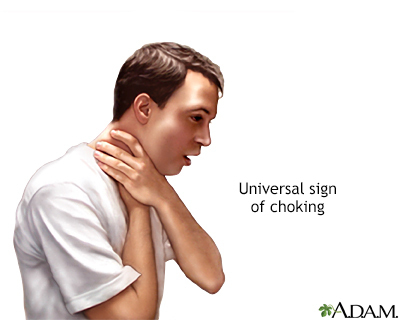
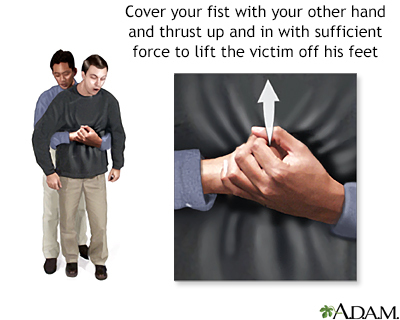
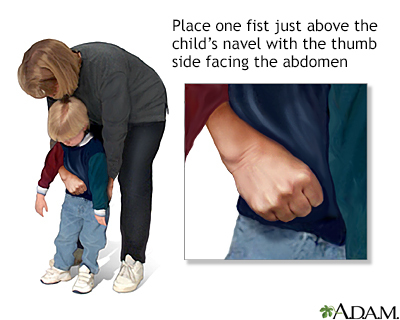
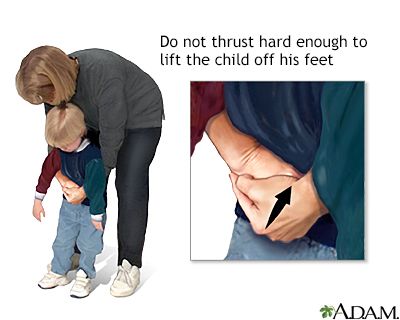
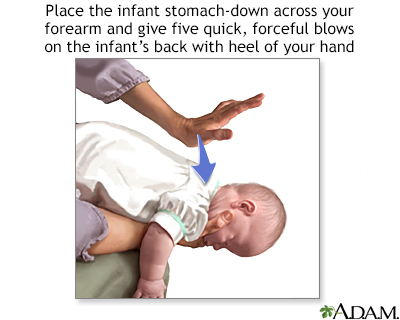
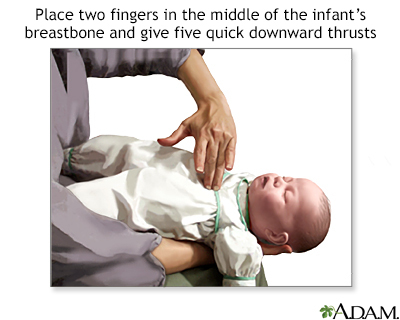
References
American Red Cross. First Aid/CPR/AED Participant's Manual. 2nd ed. Dallas, TX: American Red Cross; 2016.
Kleinman ME, Goldberger ZD, Rea T, et al. 2017 American Heart Association focused update on adult basic life support and cardiopulmonary resuscitation quality: an update to the American Heart Association Guidelines for cardiopulmonary resuscitation and emergency cardiovascular care. Circulation. 2018;137(1):e7-e13. PMID: 29114008 pubmed.ncbi.nlm.nih.gov/29114008/.
Thomas SH, Goodloe JM. Foreign bodies. In: Walls RM, Hockberger RS, Gausche-Hill M, eds. Rosen's Emergency Medicine: Concepts and Clinical Practice. 9th ed. Philadelphia, PA: Elsevier; 2018:chap 53.